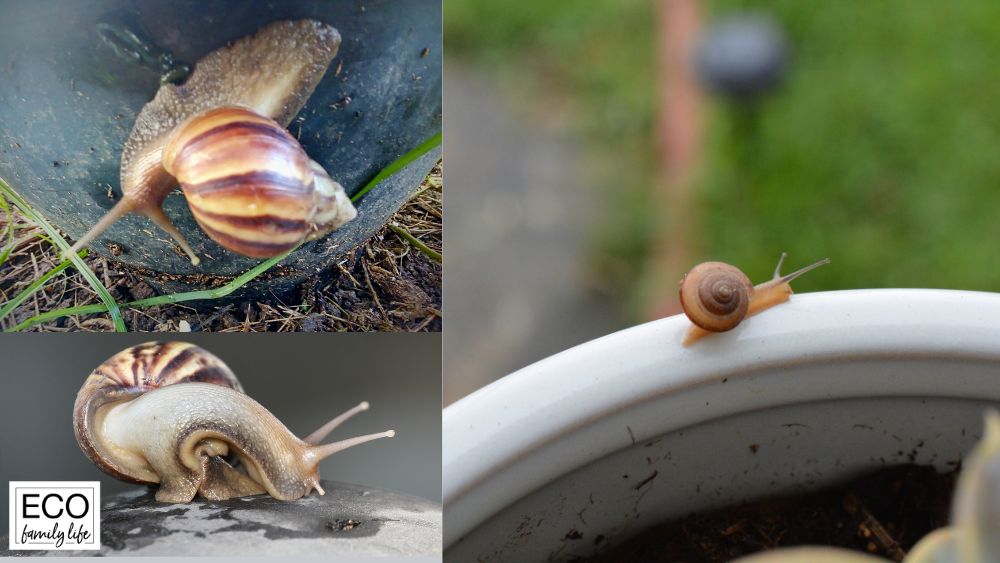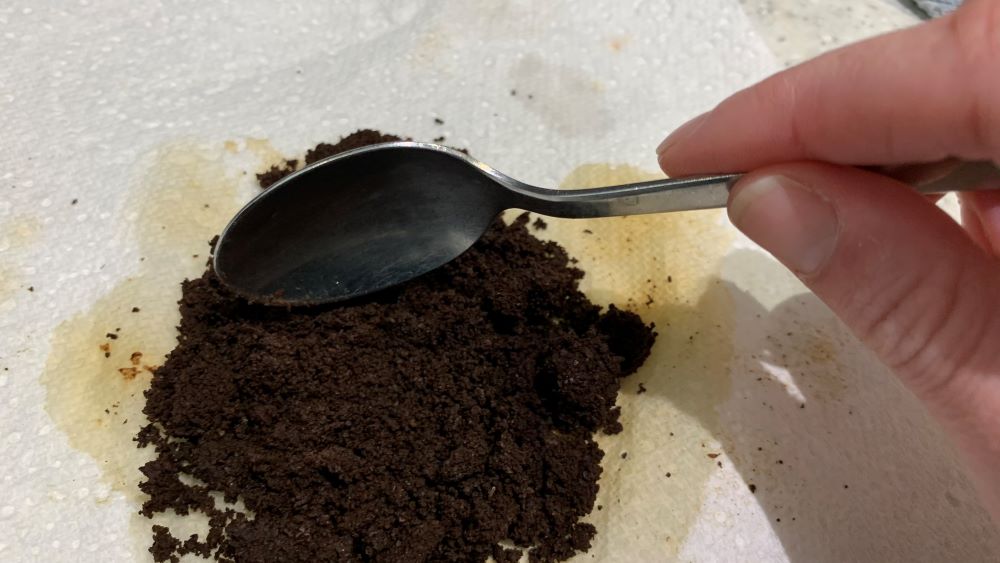Slugs climb slowly but never give up when there’s somewhere they want to go. If you notice them in the containers or pots in your garden area, that means they’ve climbed up in there themselves.
The best way to stop slugs them from climbing up pots is to put down a barrier that they are unable to cross, and this barrier can include something gritty, something oily and slick, or a to set a beer trap.

This article will explore 8 ways to stop slugs from climbing up pots.
8 Ways to Stop Slugs from Climbing Up Pots
Barriers are the best way to stop slugs from climbing up pots, but there are other things you can do as well. Let’s take a look at some of them.
1. Gritty Substance
Slugs will not climb on a gritty substance—only a smooth one. For this reason, try putting a barrier made out of eggshells, sharp sand, or even shredded pieces of glass.
It doesn’t have to be a large barrier, just make sure it goes all the way around the pot, and the slugs and snails will avoid it.

2. WD-40
WD-40 is waterproof and very slimy, but if you choose this method, make sure there are no gaps in the barrier. Otherwise, it will defeat the purpose, and the slugs may still be able to get through to the pot.
Since it’s waterproof, you can place it outside and not have to reapply quite as often.
3. Beer Traps
This is a very simple method that works great. Take plastic containers—empty yogurt containers work great—and fill them with beer.
Then, bury the containers in the soil so they’re even with the soil and none of them are showing. The slugs will be attracted to the beer but will drown once they fall into the container.
Check out this quick video that will help you take care of snails and slugs in your pots.
4. Copper Wire
If you take copper wiring and place it around the container, the acidic slime of the slugs’ bodies will cause a slight shock when they try to move over the copper.
The shocks will be enough to make the slugs avoid the area completely, and they’ll move in another direction. There is also a copper tape that you can place on the bottom of the pot itself, and it works just as well as the wiring does.
5. Pie Pan Trap
Take an empty pie pan and cut holes on the sides. Then, place it upside down in your garden after you’ve placed something like citrus peels underneath it. The snails will climb through the holes to get to the citrus peels but will be unable to get out.
Every day, lift up the pie pan to get the snails underneath and discard them accordingly.
6. Coffee Grounds
After you make your coffee in the morning, save your used coffee grounds and place them around your plant containers.
You can also place them around the entire garden area. Slugs are sensitive to certain smells and will take off in the opposite direction as soon as they smell the coffee grounds.

7. Cornmeal or Bran
Slugs love cornmeal, but it doesn’t love them back. If you place cornmeal around your plants, the slugs will eat it, but their enjoyment won’t last long. Shortly after it’s been eaten, the cornmeal will actually kill the slugs, and you’ll have fewer slugs in your garden.
8. Diatomaceous Earth
Diatomaceous earth is a natural product that consists of a certain type of algae that eventually turned into fossils.
Since it is essentially fossilized rock, it is pointy and sharp, so if you place a layer of it around your pots and containers, the slugs won’t be able to get through it or climb over it to get to the plants.
What Can Slugs Not Climb On?
Slugs can climb on just about any object. They can even climb vertically if that’s what they need to do. About the only item slugs cannot climb on is a metal slug fence, which has edges that are bent in two directions and is even rustproof.
In Northern Europe, these slug fences have been used for many decades. Because of the way they are shaped and made, most snails and slugs are unable to climb over them.
What Do Slugs Hate Most?
While people assume slugs will eat almost anything, there are certain foods and plants that slugs usually leave alone. These include vegetables such as artichokes, asparagus, fennel, leeks, melons, celery, garlic, peas, onions, potatoes, tomatoes, chard, and spinach.
They also dislike certain herbs, including feverfew, coriander, parsley, chamomile, wild garlic, thyme, tarragon, sage, rosemary, and St. John’s wort. If you’re growing these things, chances are good that slugs and snails will leave them alone.
Slugs also hate certain smells, so using essential oils in your garden could get rid of your slugs easily. Some of the smells they hate include citronella, lemongrass, cedarwood, lemon, sweet basil, peppermint, geranium, clove, and lavender.
How to Naturally Get Rid of Slugs in Your Yard
In addition to the natural barriers and the scents mentioned earlier, there are several other ways you can get rid of slugs naturally. Most people prefer these methods to chemical-filled products, and a few to consider include:
- Wood ash
- Lime
- Sawdust
- Wood shavings
- Natural predators (including beetles, chickens, ducks, robins, blue jays, toads, and snakes)
When you’re trying to get rid of slugs and snails, you have numerous possibilities. You can create barriers, add things to your garden that slugs hate (think: smells they hate), or create traps that catch the snails so you can then discard them.
Plants that give off scents that slugs hate include anise, rue, astrantia, and wormwood. You can also add nematodes to the soil, which are microorganisms that are parasites to slugs.
There are several natural methods you can try before you reach for the chemical repellents found on the market today.
Conclusion
There are several ways you can stop slugs from climbing up your pots or containers, and most of these remedies are both simple and inexpensive. The best part is, at least one of these methods should be effective on the slugs in your own garden so you won’t have to reach for any chemicals.
I am an accredited practicing dietitian, experienced gardener and a dedicated cook. I love writing and sharing my experience so you can learn from my successes and mistakes.
